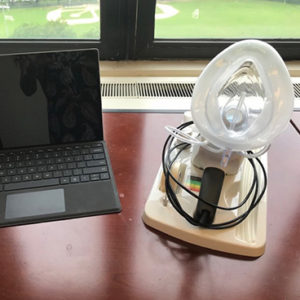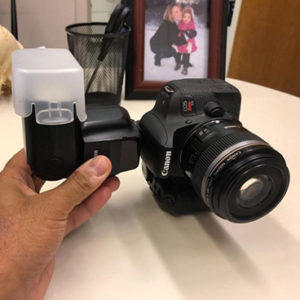Introduction Nasal airway obstruction (NAO) is defined as the sensation of insufficient airflow or difficulty breathing through the nose. A common problem in otolaryngology, NAO affects approximately 20 million Americans with a significant impact on quality of life (QOL).1-4 NAO can be caused by infectious, allergic, vasomotor, or structural abnormalities, with etiology impacting the optimal… [Read More]
Rhinoplasty Fundamentals
Photography for Rhinoplasty
Abstract The importance of consistent and high-quality photographic documentation of rhinoplasty patients cannot be understated. Herein we will review important concepts in medical photography and discuss how one can alter the quantity and quality of light that is captured by the camera. Equipment selection will be discussed, including camera, lens, and external lighting sources. We… [Read More]
Rhinoplasty Dissection Manual: Chapter 11
Plumping Grafts Plumping grafts may he used to open up an acute nasolabial angle, improve a retracted columella, and support a deficient nasal base. Dissect a midcolumellar precise pocket to just above the nasal spine. Place multiple small pieces of cartilage (I mm to 2 mm), harvested from the septum or ear, in the pocket…. [Read More]
Rhinoplasty Dissection Manual: Chapter 10
Alar Base Resection Follow the accompanying figures and text to perform alar base resections (1,2). The site of incisions and the amount, degree, and geometry of alar reductions depend on a host of anatomic variations predetermined before and during surgery. Although the surgeon’s aesthetic judgment will ultimately determine the site and degree of resection, a… [Read More]
Rhinoplasty Dissection Manual: Chapter 9
Surgery of the Nasal Tip EXERCISES (Appendix F) Placement of Columellar Strut The placement of a rectangular cartilage strut between the medial crura can improve tip support and augment tip projection. A columellar strut also can be used to correct buckled medial or intermediate crura or to increase columellar show. The strut may be placed… [Read More]
Rhinoplasty Dissection Manual: Chapter 8
Spreader Grafts Spreader grafts may be placed endonasally or via the external rhinoplasty approach. If en donasal placement of spreader grafts is done in this dissection, undertake this before hump reduction and osteotomies. Through a small (5-mm) mucosal incision near the anterior septa] angle, develop a pre cise subperichondrial pocket along the length of the… [Read More]
Surgical Techniques
Techniques in surgery can be seen as tools to help achieve a specific task. A tennis player’s tools may be seen as his forehand and backhand, his net game and serve, and so on. These tools on their own are not necessarily enough, but rather the right combination of strokes or tools must be achieved… [Read More]
The Ideal Nose
Question: Is there an ideal nose and what is it?Answer: A nose that is considered ‘ideal’ is one which is harmonious with the other favorable facial features. Our perception of beauty helps define what makes an ideal shape for a female or male nose. There is also always a bit of an artistic element to… [Read More]
Rhinoplasty Dissection Manual: Chapter 7
Medial Osteotomies To perform medial osteotomies, insert the osteotome at the junction between the nasal bone and septum. With the two-tap technique, advance the cutting edge cephalad and fade laterally as the frontal bone is reached (Fig. 1). Control the sharp leading edge of the chisel, as it moves under the skin, with the forefinger… [Read More]
Rhinoplasty Dissection Manual: Chapter 5
Incisions and Approaches Incisions are methods of gaining access to the bony and cartilaginous structures of the nose and include trans-cartilaginous, inter-cartilaginous, marginal, and trans-columellar incisions. Approaches provide surgical exposure of the nasal structures including the nasal tip and include cartilage-splitting (trans-cartilaginous incision), retrograde (inter-cartilaginous incision with retrograde dissection), delivery approach (inter-cartilaginous, marginal incisions), and… [Read More]
- 1
- 2
- 3
- 4
- Next Page »



